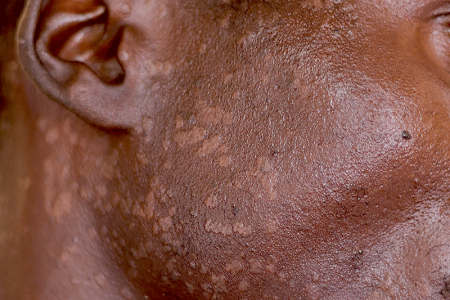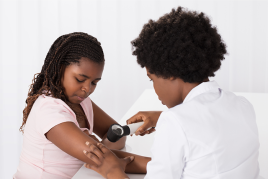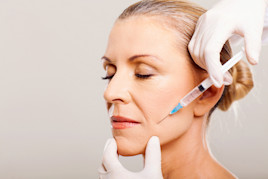Seborrheic dermatitis: Diagnosis and treatment
If your baby could have seborrheic dermatitis (called cradle cap in babies), it is best to see a dermatologist for a diagnosis
In the diaper area, the rash can look a lot like eczema, psoriasis, or an allergic reaction. Each of these conditions requires a different treatment.

How do dermatologists diagnose seborrheic dermatitis?
A dermatologist can often tell if a baby has cradle cap, a type of seborrheic dermatitis that babies develop, or an adult has this disease by:
Asking about symptoms
Looking closely at the affected skin on the scalp, face, and other areas with signs of cradle cap or seborrheic dermatitis
That’s often all that’s needed to diagnose cradle cap or seborrheic dermatitis.
Some people who have seborrheic dermatitis also have another skin disease. If your dermatologist sees signs of this, you may need a culture (a bit of skin scraped off) or a skin biopsy.
If you need a skin biopsy, your dermatologist will numb the area and remove a small bit of skin. Your dermatologist will perform the skin biopsy during your office visit, and you’ll remain awake the entire time.
The skin removed during a skin biopsy or scraping will be looked at under a microscope in a medical laboratory. The doctor who looks at the tissue under the microscope will write a report that tells what they saw. This helps your dermatologist give you an accurate diagnosis.
Once your dermatologist diagnoses you, they can talk with you about treatment.
How do dermatologists treat seborrheic dermatitis?
Your dermatologist knows the importance of developing a treatment plan based on each patient’s individual needs. A treatment plan for seborrheic dermatitis is based on a patient’s age, where the rash(es) appears on the body, how severe the disease is, and other considerations.
Here's what a treatment plan for seborrheic dermatitis may include:
Treating cradle cap: While this will go away by the time your baby is six to 12 months old, treatment can help your baby feel more comfortable. You can often treat this at home without prescription medication. Your dermatologist will explain what to do. This video also shows you How to treat cradle cap.
Sometimes, prescription medication is helpful. When cradle cap develops in the creases of your baby’s skin or diaper area, your dermatologist may prescribe medication to treat the area.
When treating cradle cap, you want to avoid irritating your baby’s skin
Use a gentle baby shampoo. Avoid shampoos meant to control dandruff and those with a strong fragrance.

Tips for treating cradle cap in the diaper area: Dermatologists recommend that you:
Use superabsorbent diapers and change them often.
Wash the diaper area with a gentle baby shampoo. Avoid using soap and products that contain alcohol.
If your baby has severe cradle cap, your dermatologist may prescribe a medication to reduce the swelling and discoloration.
Be sure to use all medication exactly as prescribed.
Treating seborrheic dermatitis in teens and adults: When teens and adults develop seborrheic dermatitis, the disease tends to come and go for years – and sometimes a lifetime. Treatment cannot cure seborrheic dermatitis, but it can:
Lessen signs of the disease on your scalp and skin
Alleviate the itch and swelling
Help you feel more comfortable
The first step is to get the disease under control. Once under control, your dermatologist will modify your treatment plan to help you maintain results.
Here’s how dermatologists treat different areas of the body:
Scalp: This is the most common place to develop seborrheic dermatitis. Treatment may include:
Dandruff shampoo: Often used to treat the scalp, you can buy some dandruff shampoos without a prescription. If you have moderate to severe seborrheic dermatitis, you may need a prescription dandruff shampoo.
Be sure to use the shampoo that your dermatologist recommends. Different dandruff shampoos contain different active ingredients.
You may find that your dermatologist recommends using two or three different shampoos. Be sure to use all of the shampoos as directed. Rotating dandruff shampoos can be an effective way to get the disease under control.
If you have severe seborrheic dermatitis, your dermatologist may prescribe a shampoo or topical solution that contains a corticosteroid. You’d use this for a short time to get the disease under control. Once under control, your dermatologist would recommend another dandruff shampoo to help prevent flare-ups.To determine how often you need to shampoo to get seborrheic dermatitis under control, your dermatologist will look at the texture of your hair
People with straight or wavy hair usually shampoo every day. If you have curly or tightly coiled hair, your dermatologist will likely recommend shampooing once a week.

When including a shampoo in a treatment plan for seborrheic dermatitis, dermatologists often give their patients tips for getting the best results. For example, if your seborrheic dermatitis extends to your forehead or elsewhere on your face, your dermatologist may tell you to shampoo these areas, too.
Give shampoo time to work
To get seborrheic dermatitis under control, it’s important to leave the shampoo on your scalp for the amount of time your dermatologist recommends. This gives the medication time to work.
You also want to thoroughly rinse off the shampoo. Skin with seborrheic dermatitis is easily irritated. If you have shampoo residue on your skin or scalp, it could cause a flare-up.
Medication to soften thick crusts: If you have raised patches that are covered with thick crusts on your scalp, your treatment plan may include one of the following to soften the crust: Coal tar, bath oil, or medication you apply to your scalp. Some people apply the treatment, letting it sit on the scalp for about one hour. If the patches are widespread or very thick, you may need to apply this treatment before bed and leave it on while you sleep.
Medication to decrease inflammation: Used to stop the swelling and discoloration, this medication is used short term.
Once seborrheic dermatitis is under control on your scalp, your dermatologist will recommend shampooing once a week with a specific shampoo. This will help you keep the disease under control.
Eyelids: The medical term for seborrheic dermatitis in this area is “seborrheic blepharitis.” Not everyone who has seborrheic dermatitis develops this. If you do, your dermatologist will show you how to treat this area at home. This usually involves:
Gently cleaning your eyelids and eyelashes with baby shampoo applied to a cotton swab. Most people do this once or twice a day until the crusts on the eyelids go away.
Applying medication as needed. Some people need an antibiotic ointment, which they apply to their eyelids, usually for 2 to 8 weeks.
Other areas of the body: If you have seborrheic dermatitis on your face, in or around your ears, on your chest, or elsewhere, your dermatologist may prescribe:
Medication you apply to your skin: To get the disease under control, your dermatologist may prescribe a corticosteroid for a short time. This medication can quickly reduce the swelling, discoloration, and itch. To avoid possible side effects, use this medication only as long as your dermatologist recommends.
To get the disease under control, some people also need an antifungal medication that they apply to their skin.Light spots caused by seborrheic dermatitis
Developing in people with darker skin tones, these spots, which are often pink or white, tend to go away with treatment.

Skin softener: The medical name for a treatment that softens the skin is “keratolytic.” This can help get rid of the scale and crusts on your skin. Coal tar is commonly used to soften skin with seborrheic dermatitis.
When seborrheic dermatitis remains despite treatment
Some people need stronger treatment to get seborrheic dermatitis under control. When this happens, a dermatologist may prescribe a medication that you take by mouth.
To help you get the seborrheic dermatitis under control and reduce flare-ups, dermatologists also recommend self-care. To find out what can help, go to Seborrheic dermatitis: Self-care.
Images
Images 1, 2, 3: Getty Images
Image 4: Used with permission of DermNet NZ.
References
Borda LJ, Wikramanayake TC. “Seborrheic dermatitis and dandruff: A comprehensive review.” J Clin Investig Dermatol. 2015 Dec;3(2):10.13188/2373-1044.
Handler, MZ (author), James WD (chief editor). “Seborrheic dermatitis.” Medscape. Last updated 11/30/2020. Last accessed 10/6/2022.
Heath CR, Usatine RP, “Seborrheic dermatitis: DX across the skin color spectrum.” Cutis. 2021;108(5):297-8.
Lindsley K, Matsumura S, et al. “Interventions for chronic blepharitis.” Cochrane Database Syst Rev. 2012 May 16;2012(5):CD005556.
Reider N, Fritsch PO. “Other eczematous eruptions.” In: Bolognia JL, et al. Dermatology. (fourth edition). Mosby Elsevier, China, 2018: 228-30.
Whittington A, Kundu RV. “Seborrheic dermatitis.” In:Taylor and Kelly’s Dermatology for Skin of Color. (second edition). McGraw Hill, USA, 2016:142-8.
Written by:
Paula Ludmann, MS
Reviewed by:
Dara D. Spearman, MD, FAAD
Elaine T. Kaye, MD, FAAD
J. Klint Peebles, MD, FAAD
Last updated: 12/6/22
 Molluscum contagiosum: How to safely treat it
Molluscum contagiosum: How to safely treat it
 Biosimilars: 14 FAQs
Biosimilars: 14 FAQs
 Practice Safe Sun
Practice Safe Sun
 Relieve uncontrollably itchy skin
Relieve uncontrollably itchy skin
 Fade dark spots
Fade dark spots
 Untreatable razor bumps or acne?
Untreatable razor bumps or acne?
 Laser hair removal
Laser hair removal
 Scar treatment
Scar treatment
 Botox
Botox
 Free materials to help raise skin cancer awareness
Free materials to help raise skin cancer awareness
 Dermatologist-approved lesson plans, activities you can use
Dermatologist-approved lesson plans, activities you can use
 Find a Dermatologist
Find a Dermatologist
 What is a dermatologist?
What is a dermatologist?

